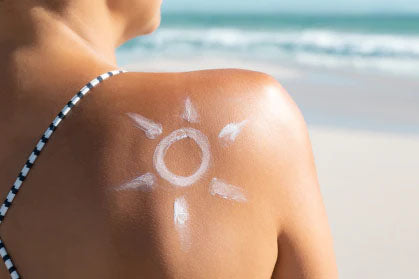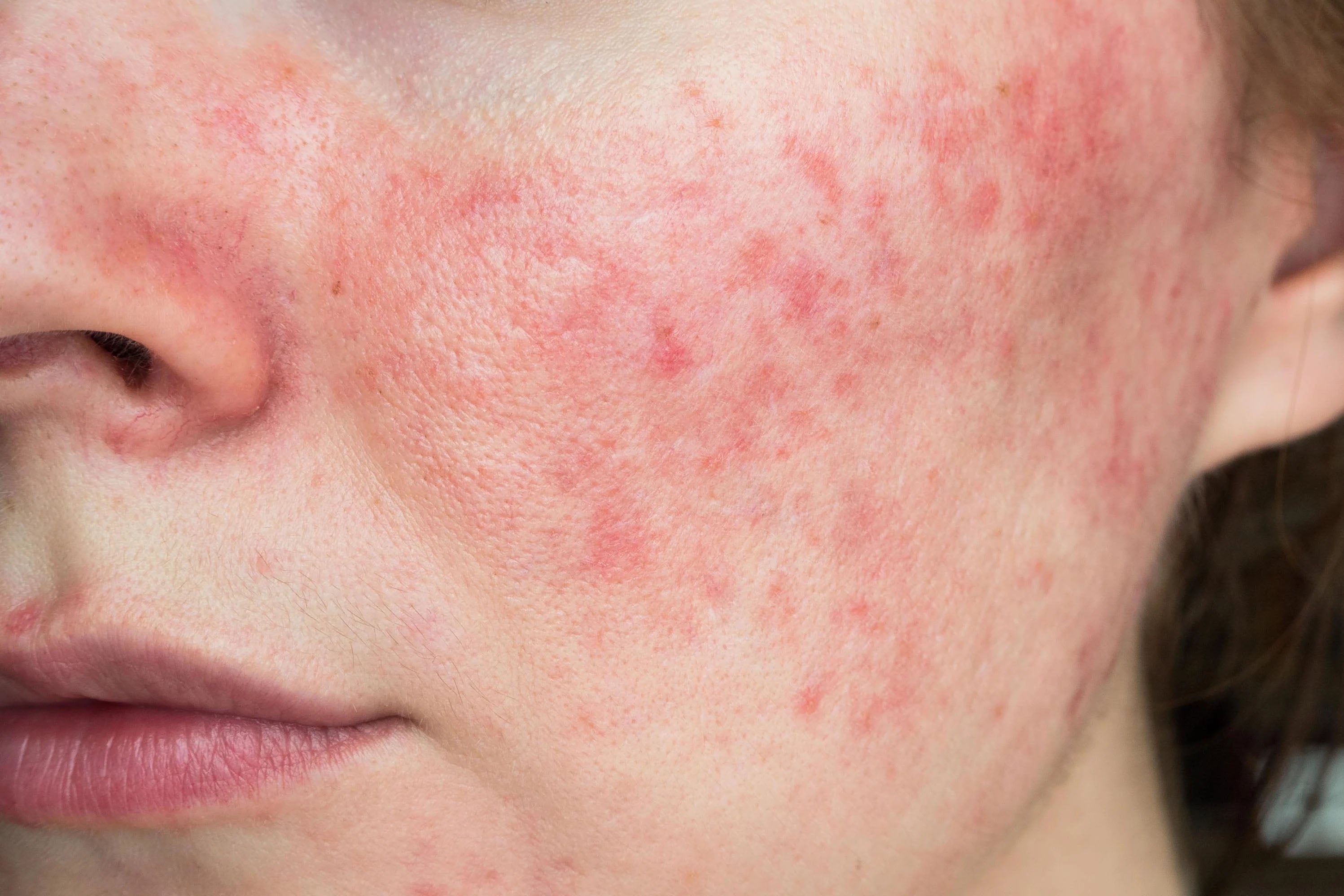Why do we need to use Sun protection?
The sun emits rays. UVA and UVB rays penetrate the Earths atmosphere and can interact with and damage your skin. UVA is particularly bad for ageing of the skin (called photoageing) and UVB causes sun burn and DNA damage. UVA cannot be felt on the skin but its rays are present everyday throughout the year. UVA passes through cloud and smog so it is present even on cloudy, cooler days. UVA penetrates more deeply into the skin than UVB and plays a significant role in premature and accelerated ageing of the skin. UVB is felt as a warmth or heat on the skin. UVB rays are strongest at about midday which is why we always say to avoid the midday sun. UVB rays are needed for the production of vitamin D in our bodies which is needed for immune, brain, heart and skin health. So some sun exposure is healthy but excessive exposure is not. An easy way to remember which one is which is to remember A for Ageing and B for Burning. Both of these rays damage the skin in numerous ways and can cause skin cancer (although UVB is considered more risky for cancer) which is why we need to protect ourselves against them. Remember the sun’s rays are called radiation for a reason. The word radiation should remind us all to exercise caution! Some rays will always get through to the skin even if you are wearing a high factor broad spectrum sun protector. Given that 80% of premature skin ageing is thought to be due to UV radiation sun protection is by far the best anti-ageing product that you could ever buy.
What’s the difference between mechanical and chemical sun protection?
Mechanical or physical sun blocks actually work by creating a barrier on the skin and reflecting the harmful UV rays. This way they do not enter the skin to cause harm. The minerals zinc oxide and titanium dioxide are the main active ingredients in mechanical and physical sun blocks. Zinc is well tolerated by sensitive skin types (its often used in baby products and acne products). Zinc also provides the most complete UVA protection with titanium dioxide being a bit weaker. Chemical sun protectors (also called organic sun protectors) work in a totally different way. The molecules sink into the skin and absorb the rays and render them less harmful by converting them to heat energy. They are a bit like a sponge, they absorb the rays and then dissipate them. Chemical formulas consist of organic, carbon based compounds like oxybenzone, octinoxate, octisalate and avobenzone.
Which one is better?
The best sun protector is the one you wear on a daily basis. Both types work to protect the skin. Most people find chemical sun protectors easier for daily use as they tend to be more cosmetically elegant and lightweight on the skin. The vast majority of sun screens sold around the world are of the chemical type. Mechanical sun blocks have traditionally been thicker and heavier on the skin but the newer ones are better and don’t have as much ‘ghosting’ and white residue.
Chemical sun protectors tend to degrade more quickly in the skin when compared to physical or mechanical blockers so frequent reapplication is necessary. Mechanical sun blocks work instantly on the skin whereas chemical ones take about 20 minutes to start protecting you. So thats a factor you must consider when choosing your formula.
Chemical sun protectors are ideal for daily use and will allow for other ingredients to be added into the formula such as antioxidants, peptides and enzymes all of which can nourish and fortifying the skin.Chemical sun protectors absorb into the skin and are therefore less likely to wash off than mechanical ones. So if you are sweating a lot or off into the sea frequently you might want to opt for a chemical one. Some formulas are a blend of physical and chemical properties taking advantage of both kinds of technologies.
What’s best for sensitive skin? And acne?
Sensitive skins may be better off with a physical sun proctor because they require fewer ingredients to get broad spectrum protection. The shorter the ingredient list the less the risk of irritation. People with eczema and rosacea for example will be better off trying to find a physical sun protector. People with melasma and pigment disorders will be better off with a physical sun protector too as they prevent the absorption of rays. People with allergies to sun block will be better off with a mechanical formula because zinc and titanium are less irritating to the skin & eyes. Those with acne may want to avoid the occlusive and heavy sun blocks and opt for a lighter weight, oil free formula.
What does SPF mean? Whats the difference between SPF 30 and 50?
SPF stands for sun protection factor. The higher the SPF the better the protection.The term SPF actually only relates to UVB rays. You need to see the term ‘broad spectrum’ or UVA protection to be sure you are also getting protection from UVA because there isn’t yet a universally accepted way to measure UVA protection. The numerical part of SPF refers to how long the sun’s rays would take to redden or damage your skin. Its a measure of how much longer it takes protected skin to start to burn compared to unprotected skin. Or how much longer you can be in the sun with sun protection on before you burn. Although the numerical values differ a lot there is actually only minimal difference between an SPF 30 and 50. SPF 50 filters 98% of UVB and SPF 30 filters 96.7%. Whats more critical than the SPF number is that you use enough of it (most people don’t) and that you reapply it every 2 hours. Avoiding the sun between 12-3pm and wearing protective, lightweight clothing should also form part of your sun protection routine.
Why do I have to reapply it?
All sun protectors irrespective of their formulation should be reapplied every 2 hours to prevent sun burn. They all degrade over time and can be rubbed off, washed off or sweated off. You need the size of a teaspoon for your face every 2 hours and the size of a shot glass to cover the body to prevent sunburn and damage.
Check the expiry date.
All sun blocks have an expiry date and a shelf life because they are unstable over time. All formulas will degrade with time and with exposure to oxygen so once opened the clock is ticking! If its out of date the active ingredients may have broken down and the sunscreen wont work as effectively, if at all. As a general rule invest in a new tube of sun protection every 6 months and then you should always be safe.
Are there other forms of light that are damaging?
Yes absolutely there are. Something that is a hot topic right now is High Energy Visible Light (HEV) and the potential damage that can be caused by this type of light on the skin. We know that HEV light penetrates deeply into the skin and causes free radical damage and inflammation. Sun protectors help to protect us against HEV as do antioxidants like vitamin C, vitamin E, ferulic acid and vitamin A. So layer in a high calibre antioxidant serum before applying your sun protector and then you should be well protect.



